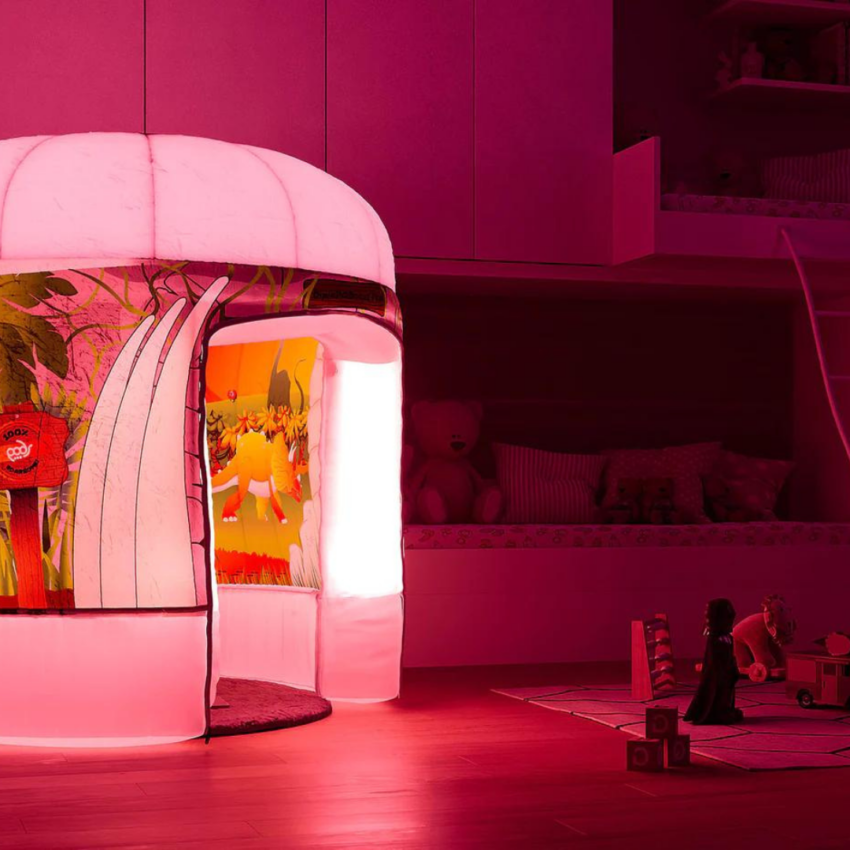Autism is a complex neurodevelopmental disorder that affects millions of children worldwide. It is characterized by a wide range of symptoms, including difficulties in social interaction, communication challenges, and repetitive behaviors. However, one of the often overlooked aspects of autism is sensory processing difficulties. Many children with autism experience heightened sensitivities or hyposensitivities to sensory stimuli, which can make everyday experiences overwhelming. In recent years, sensory tents have emerged as a valuable tool in helping children with autism manage their sensory sensitivities and create a safe and comforting space. In this article, we will explore the benefits of autism sensory tent for kids and how they can make a positive impact on their lives.
Understanding Sensory Processing in Autism
Before delving into the benefits of sensory tents, it’s essential to understand how sensory processing works in children with autism. Sensory processing refers to the brain’s ability to interpret and respond to sensory information from the environment. For most people, this process is automatic and seamless. However, children with autism often have atypical sensory processing, which can lead to various challenges.
Some children with autism may experience sensory sensitivities, which means they are hyperreactive to certain sensory stimuli. For example, they may be extremely sensitive to loud noises, bright lights, or certain textures, causing them to become overwhelmed, anxious, or even agitated.
On the other hand, some children with autism may have sensory hyposensitivities, which means they have a reduced response to sensory input. They may seek out sensory stimulation, such as spinning in circles or flapping their hands, to satisfy their sensory needs.
The Role of Autism Sensory Tents
Autism sensory tents, also known as sensory pods or sensory spaces, have gained popularity as a means of addressing these sensory processing difficulties. These tents are designed to provide a controlled and soothing environment where children with autism can regulate their sensory experiences. Here are some of the key benefits of using sensory tents for kids with autism:
1. Sensory Regulation
Sensory tents offer a controlled sensory environment where children can explore and interact with various sensory stimuli at their own pace. These stimuli can include items like soft cushions, textured surfaces, calming lights, and soothing sounds. By allowing children to regulate their sensory experiences in a controlled setting, sensory tents can help reduce sensory overload and anxiety.
2. Calming and Comfort
One of the primary objectives of sensory tents is to create a calming and comforting space. The soft materials, gentle lighting, and soothing sounds in these tents help children feel safe and secure. This can be especially beneficial for children who struggle with anxiety or sensory sensitivities. When they enter a sensory tent, they often experience a sense of relief and relaxation.
3. Self-Expression and Communication
Sensory tents can serve as a platform for self-expression and communication. Many children with autism have limited verbal communication skills, and sensory play can be an alternative way for them to express themselves. Through tactile exploration and non-verbal communication, children can convey their emotions and needs more effectively in a sensory tent.
4. Sensory Integration
Sensory integration is a crucial aspect of child development, and sensory tents can support this process. These spaces allow children to engage in activities that promote sensory integration, such as swinging, rocking, or bouncing. These activities help the brain process sensory information more effectively, leading to improved attention, focus, and overall development.
5. Reducing Sensory Overload
Sensory overload is a common challenge for children with autism. When they are exposed to overwhelming sensory stimuli, it can lead to meltdowns, tantrums, or withdrawal. Sensory tents provide a safe retreat where children can retreat when they feel overwhelmed, helping them self-regulate and avoid sensory overload.
6. Enhancing Concentration and Learning
Many children with autism struggle with maintaining attention and focus, which can hinder their ability to learn and engage in educational activities. Sensory tents can help improve concentration by providing a sensory-rich yet controlled environment. This, in turn, can facilitate learning and skill development.
Creating an Effective Autism Sensory Tent
To maximize the benefits of an autism sensory tent, it’s essential to create an environment that suits the individual needs and preferences of the child. Here are some tips for setting up an effective sensory tent:
1. Personalization
Every child with autism is unique, so it’s crucial to personalize the sensory tent to their specific sensory preferences. Some children may prefer soft textures, while others may enjoy more tactile stimuli. Observe the child’s reactions and adjust the tent accordingly.
2. Safety and Supervision
Safety should always be a top priority. Ensure that the sensory tent is set up in a safe location and that the child is supervised while using it, especially if they have specific sensory-seeking behaviors that could lead to accidents.
3. Routine and Predictability
Children with autism often thrive on routine and predictability. Incorporate the sensory tent into the child’s daily routine to provide a consistent and comforting experience.
4. Communication
Encourage communication within the sensory tent. Use visual supports, such as picture cards or communication boards, to help non-verbal children express their needs and preferences.
5. Sensory Tools
Include a variety of sensory tools and materials in the tent, such as fidget toys, weighted blankets, or calming aromatherapy diffusers. These tools can enhance the sensory experience and provide additional comfort.
Conclusion
Sensory Toys by PODS Play have emerged as a valuable resource for children with autism and their families. These tents provide a safe and controlled environment where children can regulate their sensory experiences, reduce anxiety, and improve their overall well-being. By addressing sensory processing difficulties, sensory tents open up new avenues for communication, self-expression, and learning. When personalized to meet the specific needs of each child, these sensory wonderlands become a powerful tool in the toolkit for supporting children with autism on their unique developmental journeys.


